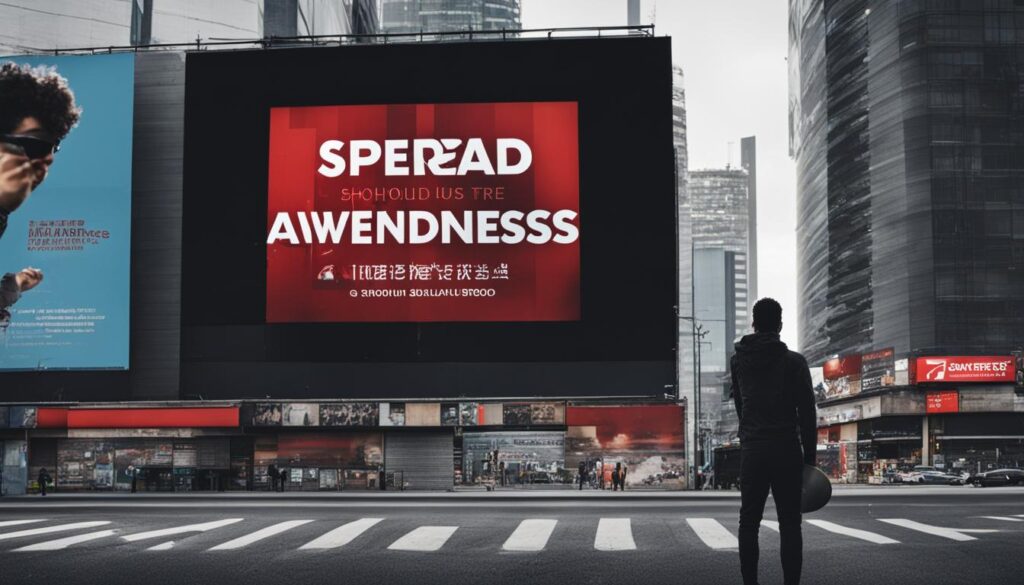When it comes to budgeting, avoiding common mistakes is vital for achieving financial independence and making informed decisions. Critical thinking plays a crucial role in steering clear of bandwagon budget blunders and ensuring the success of your organization’s budget consultation.
One of the most significant mistakes organizations make is not consulting at all. This oversight can lead to missed opportunities and disengaged citizens, hindering the effectiveness of the budget process. Another mistake is neglecting to consult online, overlooking the importance of digital platforms in public consultations. Failing to prioritize mobile users and ensuring accessibility can exclude a substantial portion of the public from actively engaging in the budget consultation. Inadequate promotion and the lack of measurement of participation are additional blunders to avoid. Lastly, shying away from harnessing the power of social media can limit engagement and miss out on valuable conversations.
By being mindful of these bandwagon budget mistakes and adopting critical thinking approaches, organizations can navigate their budget processes successfully while ensuring financial independence and citizen engagement.
Key Takeaways:
- Avoid the mistake of not consulting at all, as it can lead to missed opportunities and disengaged citizens.
- Ensure online consultations are available, as digital platforms are essential in today’s public engagement landscape.
- Don’t neglect mobile users, as their inclusion can significantly increase participation rates.
- Adhere to accessibility standards to ensure that the consultation process is inclusive and non-discriminatory.
- Promote the budget consultation widely to reach a wider audience and increase public awareness.
Mistake #1: Not Consulting at All
One of the biggest mistakes organizations make is not consulting at all when setting their budget. This can lead to uninformed decisions and the risk of alienating citizens. Good budget consultations can be tailored to the available resources and are an integral part of effective communication strategies.
Mistake #1: Not Consulting at All
One of the biggest mistakes organizations make is not consulting at all when setting their budget. This can lead to uninformed decisions and the risk of alienating citizens. Good budget consultations can be tailored to the available resources and are an integral part of effective communication strategies.
“Budget consultations play a crucial role in ensuring that decisions are informed and reflect the needs and priorities of the citizens. By not consulting at all, organizations risk disenfranchising their citizens and missing out on valuable insights.”
When organizations fail to consult with stakeholders, they miss out on the opportunity to gather diverse perspectives and ensure that the budget aligns with the needs and priorities of the community. Consulting with citizens allows organizations to make more informed decisions and build trust with the public. It also helps to create a sense of ownership and involvement, as citizens feel that their opinions are valued and taken into consideration.
Not consulting at all can lead to budget decisions that do not accurately reflect the needs and aspirations of the community, resulting in a lack of support and engagement. It is essential for organizations to prioritize budget consultations and create channels for meaningful dialogue with citizens. By doing so, organizations can make better-informed decisions and strengthen their relationship with the community.
| Impact of Not Consulting at All | Consequences |
|---|---|
| Uninformed decisions | Risk of budget allocations that do not align with community needs |
| Disenfranchising citizens | Lack of trust, reduced community engagement |
| Missed opportunities for valuable insights | Lack of diverse perspectives, potential for ineffective budget planning |
Mistake #2: Not Consulting Online
Public consultations that are not available online can become redundant in today’s digital age. With more than half of all citizens using the internet to interact with public authorities, it is crucial for organizations to leverage digital platforms for their budget consultations.
Running consultations online not only saves costs compared to traditional methods but also provides greater accessibility and convenience for the public. By making consultations easily accessible through digital platforms, organizations can ensure that citizens can participate regardless of their location or physical limitations.
Moreover, online consultations offer the opportunity to reach a wider audience and gather diverse perspectives. By utilizing digital platforms, organizations can engage with individuals who may not have otherwise been able to participate in offline consultations, ensuring a more inclusive decision-making process.
“The shift to online consultations has revolutionized the way we gather public input. It has allowed us to engage with a broader range of citizens and hear their voices more effectively. Through digital platforms, we have been able to make our budget consultation process more efficient and transparent.”
Benefits of Online Consultations:
- Cost savings compared to traditional methods
- Greater accessibility for citizens
- Convenience for participants
- Ability to reach a wider audience
- Diverse perspectives and inclusive decision-making
Mistake #3: Neglecting Mobile Users
Neglecting mobile users can lead to a significant section of the public being excluded from engaging with the organization. In today’s digital era, where mobile devices are ubiquitous, optimizing budget consultations for mobile platforms is essential for maximizing participation and reaching a wider audience.
One customer reported a staggering 750% increase in participation when their budget consultation was optimized for mobile devices. This underscores the importance of ensuring that consultation processes are accessible and user-friendly for mobile users.
By neglecting mobile users, organizations risk alienating a large demographic and missing out on valuable insights and perspectives. Embracing mobile optimization not only increases the chances of increased participation but also demonstrates a commitment to inclusivity and accessibility.

Benefits of Mobile Optimization for Budget Consultations
- Expanded audience reach: Mobile optimization allows organizations to engage with a broader demographic, including individuals who primarily use their smartphones or tablets for online activities.
- Convenience and flexibility: Mobile devices offer users the ability to participate in budget consultations anytime, anywhere, increasing the likelihood of active engagement and feedback.
- Improved user experience: Investing in mobile optimization enhances the user experience by providing a seamless and intuitive interface tailored to the specific capabilities of mobile devices.
- Increased response rates: The convenience and accessibility of mobile optimization can lead to higher response rates, ensuring a more comprehensive and representative data set.
By recognizing the significance of mobile users and prioritizing mobile optimization in budget consultations, organizations can foster greater inclusivity, drive increased participation, and make more informed decisions based on a wider range of perspectives.
Mistake #4: Poor Accessibility
When it comes to budget consultations, adhering to accessibility standards is not just a good practice but a legal requirement. Failure to meet these standards can be seen as discrimination and can have severe consequences for an organization. Accessibility ensures that people with disabilities can access the information and participate in the consultation process, promoting inclusivity and equal opportunity.
Consultations should follow the Web Content Accessibility Guidelines (WCAG) to provide a user-friendly experience for all individuals. This includes considerations such as providing alternative text for images, using clear and simple language, and ensuring compatibility with assistive technologies.
“Accessibility is not a nice-to-have, but a fundamental aspect of online engagement. By implementing accessibility standards, organizations demonstrate their commitment to inclusivity and break down barriers that can hinder participation.”
By prioritizing accessibility, organizations can ensure that their budget consultations reach a wider audience and engage with individuals who may otherwise be excluded. It also reflects positively on the organization’s reputation and demonstrates a genuine commitment to engaging with the diverse needs of the community.
| Benefits of Accessibility | Consequences of Poor Accessibility |
|---|---|
|
|
Mistake #5: Inadequate Promotion
One of the key reasons why budget consultations often fail to achieve good participation rates is inadequate promotion. Without proper promotion, the public may remain unaware of the consultation, leading to a limited response and a missed opportunity for valuable input from a wider audience.
To ensure public awareness and maximize participation, organizations should implement a comprehensive promotion strategy. This strategy should include notifying existing contacts, such as stakeholders and community leaders, about the consultation. Additionally, proactive outreach through local media, community groups, and online platforms can help reach a broader audience and generate interest.
By investing time and effort in effective promotion, organizations can ensure that their budget consultation receives the attention it deserves. This can result in a more diverse and representative range of voices, providing valuable insights and enhancing the overall decision-making process. Ultimately, adequate promotion is essential in achieving value for money and ensuring that the budget consultation reflects the needs and opinions of the community it serves.

Mistake #6: Not Measuring Participation
Monitoring and measuring participation in a budget consultation is crucial for assessing its effectiveness and making informed decisions. Data analysis plays a key role in understanding the level of engagement, identifying trends, and gaining insights for continuous improvement. By collecting and analyzing participation measurements, organizations can evaluate their outreach efforts, identify areas of success, and address any gaps in the consultation process.
There are several important metrics that can be tracked to measure participation. The number of responses received is a basic indicator of engagement, providing a measure of the overall interest and involvement of the public. It is also beneficial to analyze participant demographics to ensure inclusive representation and identify any potential disparities in engagement.
Conversion and dropout rates are additional metrics that can provide valuable insights into the effectiveness of the consultation process. By understanding the journey of participants, organizations can identify any barriers or challenges that may be hindering their engagement. This information can inform adjustments and improvements to the consultation process to increase overall participation.
Key Metrics for Measuring Participation:
| Metric | Description |
|---|---|
| Number of Responses | Total count of participant submissions, indicating overall interest and engagement. |
| Participant Demographics | Analyzing the characteristics of participants to ensure inclusive representation and address any disparities in engagement. |
| Conversion Rate | The percentage of participants who complete the consultation process, indicating the effectiveness of engagement strategies. |
| Dropout Rate | The percentage of participants who start the consultation process but do not complete it, highlighting potential barriers or challenges. |
By regularly monitoring and analyzing these key metrics, organizations can gain valuable insights into the success of their budget consultations and identify areas for improvement. Continuous improvement based on data analysis ensures that the consultation process evolves and remains effective in engaging the public and making informed decisions that align with their needs and priorities.
Mistake #7: Shying Away from Social Media
Some organizations are hesitant to use social media as a channel for budget consultation due to misconceptions or fear of negative outcomes. However, social media can be a valuable tool for engaging with diverse audiences and driving consultation traffic. Choosing not to engage with social media can result in missing out on important conversations and opportunities.
Social media engagement allows organizations to reach a wider audience and foster meaningful interactions. By utilizing platforms such as Facebook, Twitter, and Instagram, organizations can connect with citizens on a more personal level, addressing their concerns and gathering valuable feedback. Social media channels also provide an avenue for disseminating information about the budget consultation, making it easily accessible and shareable.
Embracing the Bandwagon Mentality
Embracing social media as part of the budget consultation strategy demonstrates a proactive approach and a willingness to adapt to modern communication trends. Organizations that shy away from social media risk being left behind, missing opportunities to engage with a digitally-savvy audience.
“Social media is no longer just a trend; it is a fundamental part of how people communicate and engage with the world. By avoiding it, organizations are setting themselves up for guaranteed failure.” – [Insert Expert Name], [Insert Organization Name]
It is important to note that while social media can be an effective channel for engaging with citizens, it is essential to have a well-defined strategy in place. Organizations should establish clear goals, identify target audiences, and tailor their messaging accordingly. Regularly monitoring and responding to comments, questions, and concerns on social media platforms also demonstrates transparency and strengthens public trust.
By embracing social media as a tool for budget consultation, organizations can foster a more inclusive and participatory decision-making process. It allows for a wider range of voices to be heard and enables organizations to gather diverse perspectives. Moreover, social media engagement can help organizations stay ahead of the curve, ensuring that budget decisions are aligned with the needs and expectations of the community.

Conclusion
Avoiding bandwagon budget blunders requires a comprehensive digital strategy and effective execution. By leveraging the power of digital platforms and aligning the brand, organizations can successfully navigate their budget processes and make better-informed decisions.
Developing a robust digital strategy is key to avoiding budget mistakes. Consultations should be made available online to cater to the increasing number of citizens who use the internet to interact with public authorities. This not only saves costs but also ensures wider accessibility and inclusivity.
Effective execution of the digital strategy involves adhering to accessibility standards, promoting the consultation widely, and measuring participation. By meeting accessibility standards, organizations demonstrate their commitment to inclusivity and avoid potential legal issues. Adequate promotion helps raise public awareness, resulting in increased participation and valuable insights. Monitoring and measuring participation data allow for continuous improvement and informed decision-making.
Furthermore, organizations should not shy away from leveraging social media as a valuable tool for engagement. Social media platforms provide opportunities to reach diverse audiences and drive consultation traffic. Embracing social media can foster meaningful conversations and open doors to valuable insights and collaboration.
FAQ
What is the most common mistake organizations make when setting their budget?
The most common mistake is not consulting at all, which can lead to uninformed decisions and alienating citizens.
Why is it important for budget consultations to be available online?
Public consultations should be available through digital platforms as half of all citizens use the internet to interact with public authorities. Running consultations online can save costs and maintain the organization’s reputation and trust.
How does neglecting mobile users affect budget consultations?
Neglecting mobile users can exclude a significant section of the public from engaging with the organization. Optimizing the consultation process for mobile devices can lead to a significant increase in participation.
Are there any legal requirements for online engagement in budget consultations?
Yes, online engagement, including budget consultations, must meet accessibility standards to avoid discrimination. Consultations should adhere to accessibility standards, such as the Web Content Accessibility Guidelines (WCAG), to ensure people with disabilities can access the information and participate.
How can organizations effectively promote their budget consultations?
Organizations can effectively promote their budget consultations by notifying existing contacts, reaching out to a wider audience through local media and community groups, and utilizing online platforms. Widely promoting the consultation can increase participation and awareness.
Why is measuring participation important in a budget consultation?
Measuring participation is crucial for assessing the effectiveness of a budget consultation. Data such as the number of responses, participant demographics, and conversion and dropout rates provide insights for improvement and continuous enhancement of the consultation process.
Should organizations use social media as a channel for budget consultation?
Yes, organizations should use social media as a valuable tool for engaging with diverse audiences and driving consultation traffic. Avoiding social media can result in missing out on important conversations and opportunities for engagement.
How can organizations avoid common budget consultation mistakes?
Organizations can avoid common mistakes by consulting with citizens, especially online and through mobile platforms, adhering to accessibility standards, promoting the consultation effectively, measuring participation, and embracing social media. Aligning the budget consultation strategy with the digital brand can lead to effective execution and positive outcomes.
What Are Some Strategies to Counteract Bandwagon Bias in Budgeting?
When it comes to counteracting bandwagon bias in budgeting, there are several strategies that can be implemented. First and foremost, it is crucial to thoroughly evaluate each expense and decision independently, rather than simply following what others are doing. Additionally, establishing clear budgeting goals and priorities can help steer away from the influence of bandwagon bias. Lastly, seeking diverse perspectives and actively soliciting alternative opinions can help mitigate the effects of this bias in budgeting decisions.
How Can I Avoid Falling into the Sunk Cost Trap when Making Budget Decisions?
When making budget decisions, it’s crucial to be aware of the sunk cost trap. To avoid falling into this trap, always focus on the future costs and benefits rather than the past investments. By objectively assessing the potential outcomes and considering alternatives, you can make rational decisions that prioritize future gains over past expenses, effectively avoiding sunk cost traps.
Source Links
- https://res.cloudinary.com/delib/image/upload/v1598460590/pdf/7-Common-Budget-Consultation-Mistakes.pdf
- https://www.hollamarketing.com.au/holla-blog/10-marketing-mistakes-small-businesses-make-and-how-to-avoid-them
- https://www.linkedin.com/advice/0/what-most-common-digital-strategy-mistakes-businesses


Pingback: Harmony Over Discord: Reducing Cognitive Dissonance in Budgeting – Straight Fire Money